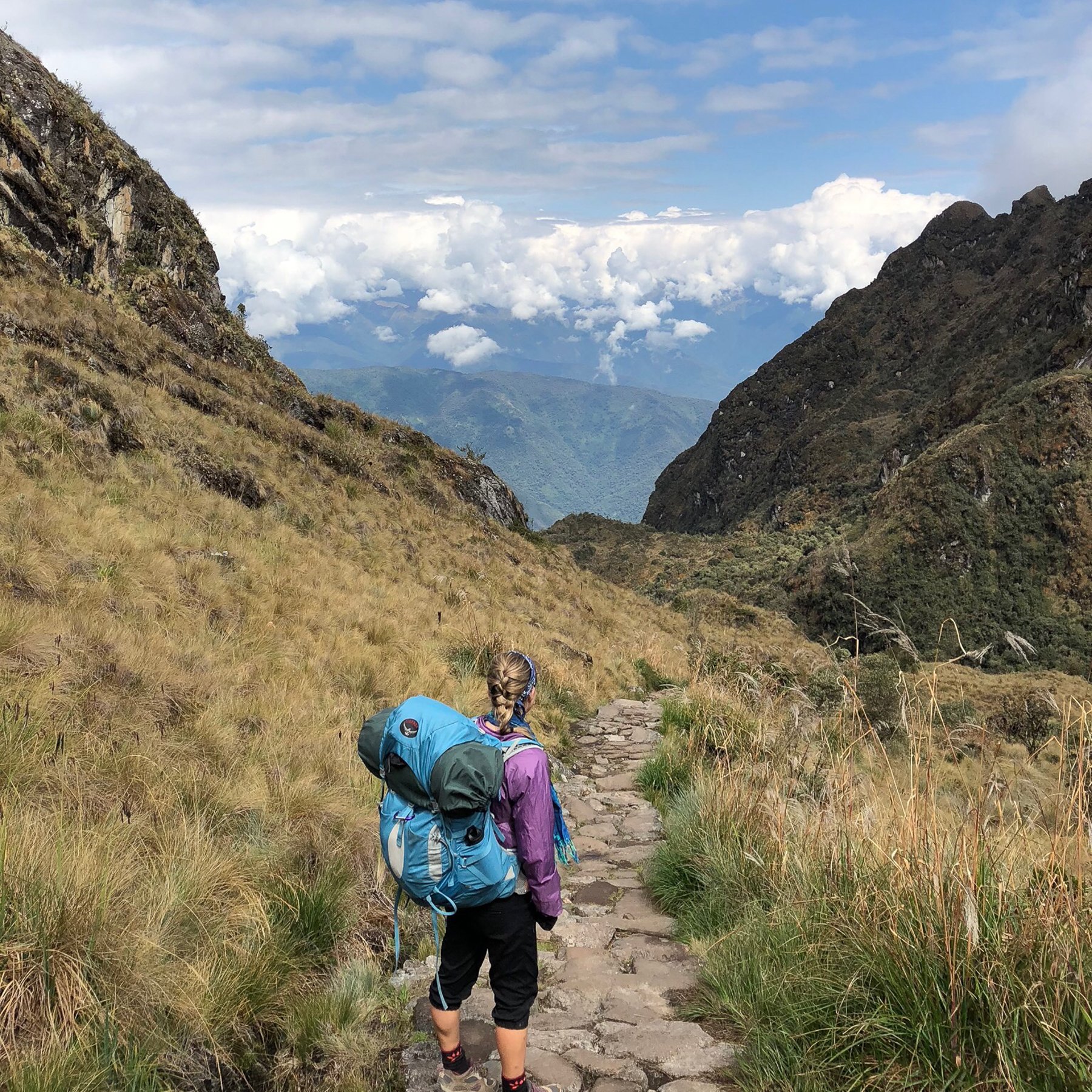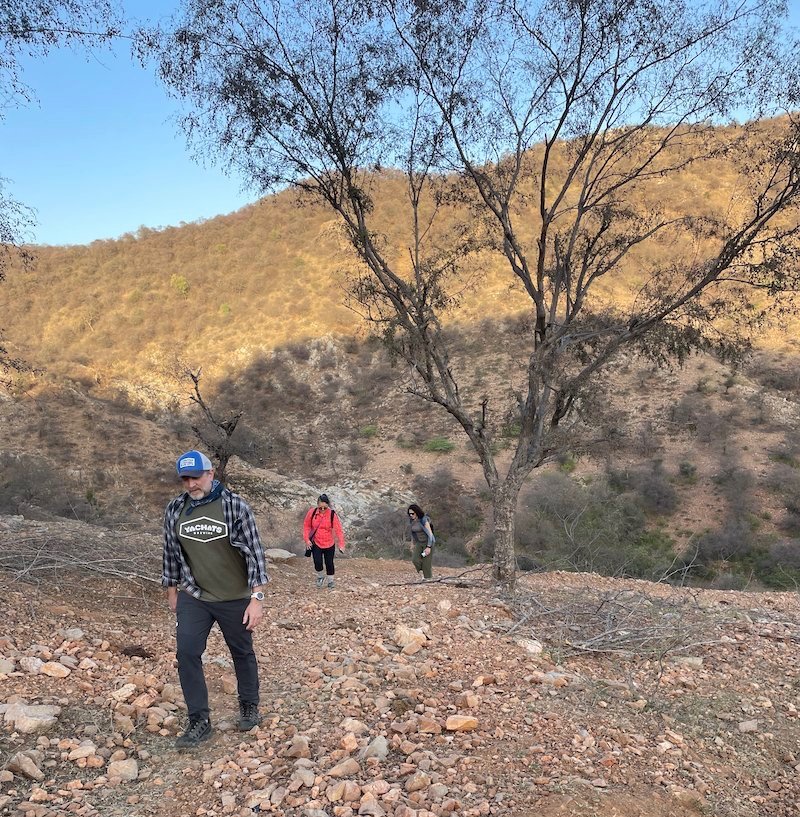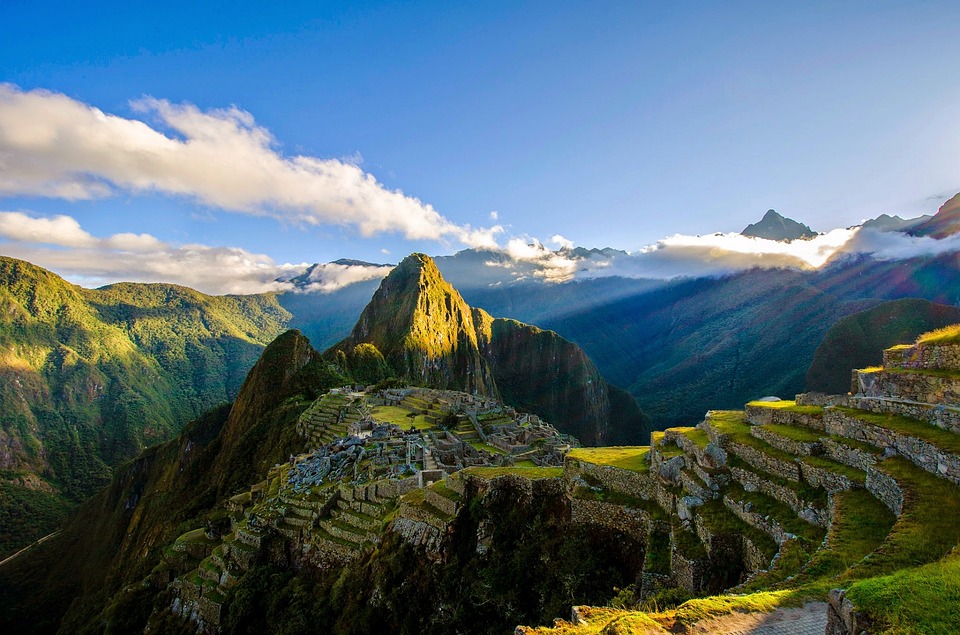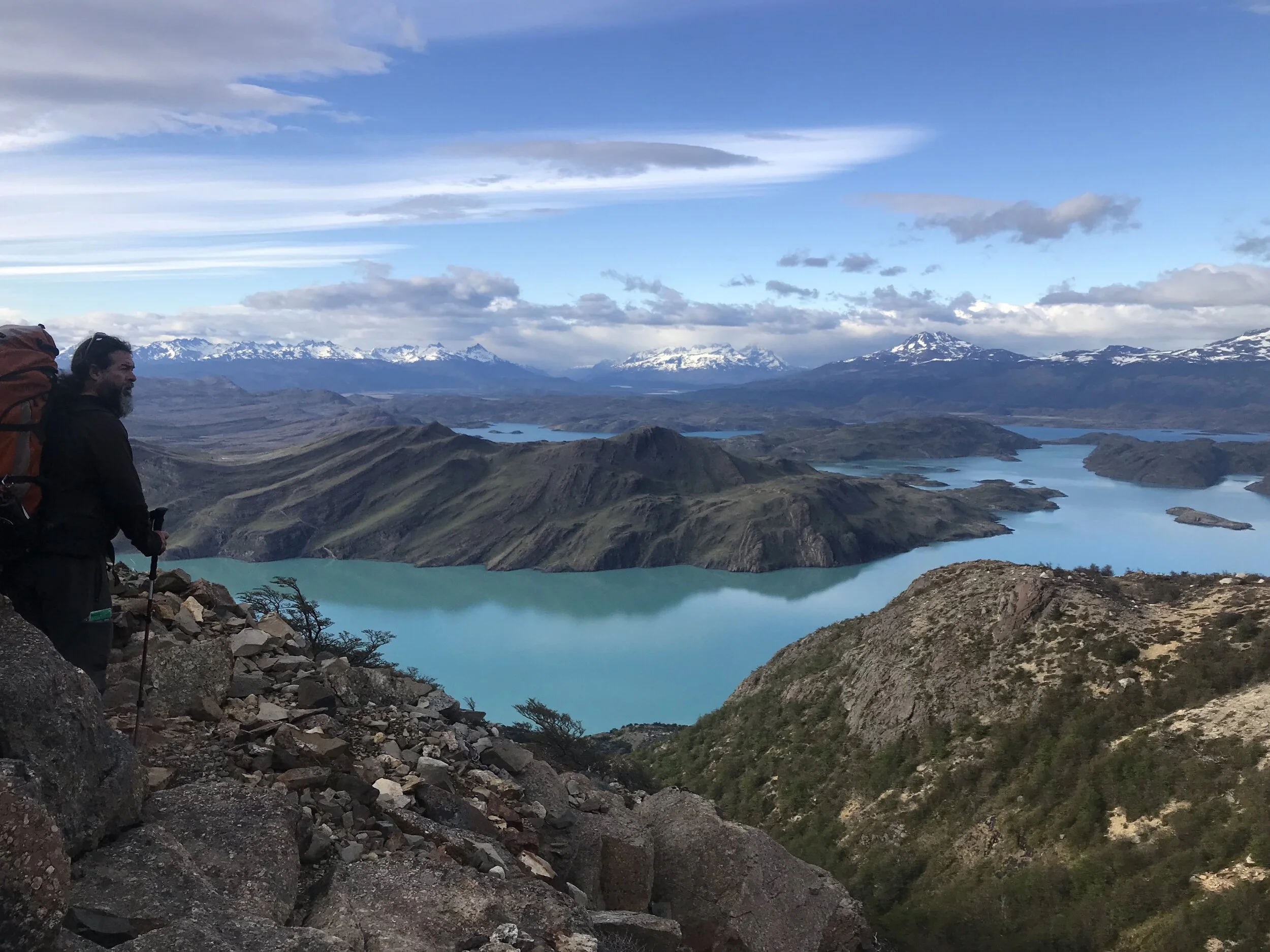We know the feeling: You’re giddy now that you’ve booked your epic hiking trip. You’ve got the training plans set to get physically prepared. Plane ticket is booked. But then it hits you. What to pack for a hiking trip? And how to pack? And what to pack it all in? You have limited space and a variety of weather conditions, maybe even varying micro climates. Where to even start?
Taking a multi-day trekking trip in a foreign land is an authentic way to connect with a culture and their relation to the natural world. Hiking is a challenging activity that allows you to explore a unique landscape in a truly unique way.
What to bring on a hiking trip will truly impact your experience.You want to have the right gear you need to take care of your body while hiking while also respecting the local destination and environment. To ensure a safe and successful hiking trip you’ll want to pack the right essentials for the occasion.
Our team has been on hiking trips all around the world. We’ve pulled together our knowledge and experience to share our best tips with you so that you know exactly what to pack for a hiking trip. In this blog, we’ll be sharing everything you need, from how to choose a bag, what clothes you should bring, and what snacks you should pack.
So without further ado, let’s get into the ultimate list of what to bring on a hiking trip.
Tiger’s Nest Hike, Bhutan. Photo: Ashley Blake
Here is our essential packing list for a hiking trip
Before you hike:
Research the terrain and route. Know what kind of terrain you'll encounter and how many miles you’ll hike each day and over the whole trek. Also take into consideration elevation gain. This will help you determine your gear type and how much to bring.
Check the climate and weather. Many hiking destinations will have varying hiking seasons. Know which season you’ll be hiking in, e.g., rainy season, dry season, winter versus summer, etc. Do you expect below freezing temperatures? A lot of rain? A wide variety of temperatures? High humidity? This will help you determine the type of gear you need.
Check the gear-list with your guide or operator. Many treks such as the Inca Trail, Mt. Kilimanjaro or Chile’s W Trek require you to book through an operator and hike with a licensed guide. This is to protect you, as they know the trails in and out and are medically trained in case of emergency. They will also be able to tell you what’s included or not, such as sleeping mats, sleeping bags, poles, tents, etc. Also, know if you’ll have a porter for your bag (a common option for many multi-day guided hikes) or if you’ll need to pack in all of your own gear. And if you do have a porter, check on what the limit is (usually measured in liters or kilos).
Do all your normal pre-departure to-dos. Passport, vaccines, visas, cultural education (check out our book list by destination!), plane tickets, credit/debit cards, cash, etc. Oh and don’t forget the dog sitter!
Which backpack to choose for a hiking trip
Inca Trail Hike, Peru
Your first packing essential to consider is your luggage strategy. Can you carry it all in just one backpacking backpack? Or do you need a duffel bag (that the porter will carry) and a day bag (that you will carry)? What about your luggage for before and after - will there be somewhere to store it?
Whichever you need, here are our tips for each:
A day bag perfect for a 3-day Annapurna trek in Nepal
Hiking Backpack: When packing for a hiking trip, you’ll want your backpack to be comfortable and fitted well to your size and body type. A 30-40 liter is a good starting point. The length of your hike along with technical terrain will also impact the volume and style you choose. It should fit all your gear for the hike, including a sleeping bag and mattress (often rolled up on top or bottom). This Deuter 34L Multi-Day Backpack is a good example, or for women the Osprey Tempest model
Pro tip: Head to your local outdoor store and try on backpacks for good measure and to see what style and fit suits you best.
Hiking Day Bag: Choose a comfortable, sturdy day bag that can hold enough water to keep you hydrated throughout the day (often in a hydration bag like this) in addition to layers, snacks and rain gear. We like the Dueter Speed Lite 21L Backpack as it’s big enough for your essentials while also good on your back. You might also consider a fanny pack for quick access to your camera, chapstick, hat and sunglasses.
Duffel Bag: Having a duffel bag on your hiking trip gives you lots of versatility. If you’re using a porter, you can pre-pack this bag to give them. Or if you’re taking your backpack along for the hike, pack up the duffel bag to leave behind at the hotel with all the fresh clothes and supplies you’ll need upon your return. We love this Patagonia 40L duffel because it meets carry-on size requirements and also folds up super tiny.
Clothes to pack for a hiking trip
Hiking in Rajasthan, India
When it comes to clothing, you'll want to dress in layers to accommodate changing weather conditions. Even if you never end up using the additional layers, it’s a good safety habit to get into because weather in the mountains is very unpredictable.
Wear moisture-wicking and quick-drying fabrics. Choose polyester, nylon, or merino wool. Merino Unbound is an excellent example with their naturally antibacterial and moisture-wicking clothes.
Sturdy pants or capris. Even though it’s tempting to wear shorts in hot weather, you’re still in an environment that puts you at risk of scrapes, cuts, and insect bites. When it comes to hiking, the right material will not only protect you in hard environments you can still remain comfortable in warmer temps.
A lightweight waterproof or windproof jacket also comes in handy when surprising weather rolls through.
Extra socks can also come in handy just in case the ones you started hiking with get wet. Cold feet can turn into a dangerous situation quickly.
Choose sturdy comfortable hiking shoes or boots with good traction to support your feet during the hike.
A brimmed hat to protect you from the sun
Sturdy shoes with good traction. If you’re doing more than 8 miles or in rocky terrain you want to have a shoe specifically for hiking over running shoes. Make sure that you have some room in the toes for when you’re going downhill. Tight shoes will cause blisters and very painful toes. Body Foot Glide is highly recommended before going out on a hike when you’re prone to blisters!
Ready to hit the trail, Nepal
Packing essentials for food and water while hiking
Stay Hydrated!
When choosing what to pack for day hiking, remember that staying hydrated is absolutely essential for a safe and successful hike. The amount of water you bring can make or break your experience, and if you're ill prepared then the situation could potentially turn dangerous. Never assume that a light hike or even a stroll in nature can go without water. How you carry and prefer to drink water comes with many options.
Refilling with the Grayl water filter - Photo: Scott Rolfson
Hydration Bladder: A portable water bag that comes with an attached hose and a locking mouthpiece so you can drink water without stopping. One setback is that a hydration bladder needs to be cleaned properly after using them which is a process. If you prefer a low-maintenance option, the hydration bladder isn’t for you.
Portable Water Filter: Depending on the length of your day hike, having something to filter water can really come in handy. Whether you’re out on a trail or traveling in areas with questionable water quality, a portable water filter is life saving. We strongly recommend the Grayl water filter that allows you to filter water anywhere you go!
Electrolytes are essential for bodily function when hiking. Without them, your body will experience a variety of complications that will make your hike challenging. Nuun Hydration is a well trusted brand that uses clean healthy ingredients and provides different electrolyte formulas for different needs.
Stay fueled!
Fueling the body will provide a much more comfortable experience overall. Stick to packing lightweight, energy-boosting snacks. You may want to bring some of these from home before your trip, and you can also stock up on snacks locally at your destination. Here are some of our favorites:
Nuts and seeds: Nature’s go-to energy source with a balance of protein and carbs and easily obtained around the world. Dried chickpeas or lentils such as chaana dal mung daal are great options in India and surrounding areas.
Fruit and vegetables that you can pick up in your local destination. Bananas and avocados are an easy go-to in more tropical places; dried fruits such as dates and apricots are a go-to in desert locales, and more temperate zone choices such as apples, cucumbers and carrots pack easily for a hike.
DIY backcountry charcuterie with hard cheeses, nuts & seeds, salami or jerky, olives, and some rustic bread. A great choice if you’re able to hit up a local market before you start your hike!
Hearty crackers won’t spoil and are a good snack for quick fueling.
Freeze dried meals that use cold water are super tasty, calorie dense, and lightweight. The Outdoor Herbivore is an excellent choice with simple healthy ingredients.
And don’t forget your reusable utensils of choice, like this cutlery set from Sea to Summit.
Hiking in New Zealand
Safety Tips for Hiking Internationally
Safety necessities are something to never be ignored when you’re packing for an international hiking trip. Better to be over prepared than under!
First Aid Kit: Even if you're headed out on a light hike, a small first aid kit is important to have. You don't need anything big or fancy. A pack with bandages, antiseptic wipes, pain relievers, any necessary personal medications along with a medical ID card can ensure a safer experience.
Cell Phone: Even though cell service may not be available in remote areas, having a mobile phone and an external battery pack is still a solid safety tool.
An app such as AllTrails or Strava that will allow you to use GPS tracking without an internet connection and have access to maps of the area you're in. Be sure to share your data with a friend or family member at home in case an emergency arises. Many apps now offer free location tracking, which can help loved ones keep an eye on your route and ensure you're safe throughout your trip.
When packing tech gear for your hike, it’s worth thinking about how to protect your phone from rough terrain, moisture, or sudden drops. A sturdy, weather-resistant case can make a big difference, especially if you rely on your device for maps or photos. Brands which offer durable options such as the Ghostek cases for 17 Pro Max, design covers that balance protection with usability. Investing in a quality case helps ensure your phone stays functional throughout the journey, no matter the conditions.
A few other items to consider- a multi-tool or pocket knife, a whistle, and a compass (learning how to use this tool is a life-saving skill) will all be handy in an emergency.
Views while hiking in Patagonia
final thoughts
Whether you’re headed out on a multi-day hiking trip or a short day hike, preparation is key. When it comes to what to pack for a hiking trip, the right gear is especially important when you’re far away from home and may not have access to additional supplies you will need.
If you’re ready for a hiking adventure in another country, we’ve got some special destinations for you! Check out our TRIPS BY STYLE page and scroll through the itineraries that include hiking and nature.
Disclaimer: This article may contain affiliate links for products that we love that are made by brands that we trust. By purchasing from those links on our site, we can earn a commission – which is at no extra cost to you and helps keep our site running with free information like this. Win-win! Thank you for supporting our small business and sustainable tourism!
























Planning a trip to Chile and want to include the W Trek in Patagonia, a four or five day midlevel trek? You’re in the right place! We’ve planned the perfect 9 days in Chile itinerary for you that gives you a bit of city and seascapes as well as folding in some trekking time in Patagonia!